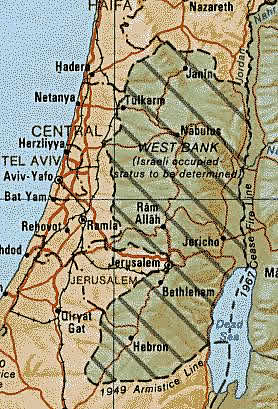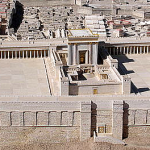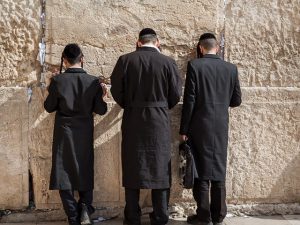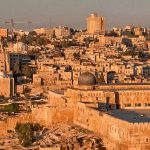Claims, Counter Claims and Confusion

Fig.1: The Levant. Image: CC-BY-SA-3.0, Wikimedia Commons
ISIS CLAIM: A study of the legal borders of Israel is timely when politicians or the media use terms like ‘IS’, ‘ISIS’ or ‘ISIL’. When they refer to the so-called ‘Islamic State’ (‘IS’ or ‘Daesh’ in Arabic) they may be referring to ISIS, meaning “Islamic State of Iraq and al-Sham (Syria)”. But when they refer to ‘ISIL’, they effectively rewrite the map of the Eastern Mediterranean between Turkey and Egypt. ISIL means “Islamic State of Iraq and the Levant”, where Levant embraces all of Israel, Cyprus, Jordan, Lebanon, Syria and areas of southern Turkey, link. See Fig.1 and Levant.
Clearly, by using the term ISIL, politicians and the media fall into the trap of not even recognizing the State of Israel, never mind the legal borders of Israel. The aims of ISIS are in fact much wider than the elimination of Israel. They see a global caliphate secured through a global war.
RABBIS CLAIM: Of course, Israel’s Rabbis take the opposite view to ISIL:
“God’s plan has been to give Israel to His people, not to anybody else … It belongs to the Jewish people of all generations. Nobody authorized us, nobody gave us the right, nobody gave us permission to hand over any part of Israel to anybody else” [Rabbi Gold, ‘Emergency Conference for the Security of the Nation of Israel in the Holy Land’, May 2016].
POLITICIANS & MEDIA CLAIM: The international community (Palestinians, politicians, media, academia …) holds an uninformed and confused view of the borders of Israel. So they frequently call for Israel to withdraw to the ‘pre-1967’ borders, as defined by the 1949 UN ‘Green line’. But these borders were only temporary, according to those who drew up the Green Line, and were never intended to be permanent. So the international community maintains, incorrectly, that Israel is building on ‘occupied land’, and it favours a two-state solution, involving a division of Israel.
THE LEGAL TRUTH: The actual legal position is in Israel’s favour. This article shows that Israel can legally occupy all territory west of the Jordan, including the West Bank. Let’s look at the most contentious issue first.
The Legal Borders of Israel Embrace the West Bank and Gaza
Israel is constantly accused of living on ‘occupied land’. The fact is, according to International Law this is a total misrepresentation of the legal status of Israel. The 1949 UN armistice borders (the ‘Green Line’) have never received international recognition and were not recognized by Arab states, which continued to refuse to recognize Israel:
“The armistice agreements of 1949 … did not purport to establish definitive boundaries” [Prof Judge Schwebel, former President of the International Court of Justice]
“The armistice lines were intended to be temporary … this, or course, was particularly true of Jerusalem. At no time … did I refer to East Jerusalem as occupied territory” [Arthur Goldberg (one drafter of UN Resolution 242)]
So all of western Palestine, from the Jordan to the Mediterranean, including Gaza and all of Jerusalem remains legally open to Jewish settlement under the original 1922 British Mandate. International lawyers (see video) maintain that this right of settlement is protected by Article 80 of the UN Charter which recognizes the Trust (British Mandate) handed to it by the League of Nations. So Israeli settlers have as much right to live in the West Bank or Gaza as non-Jews. The Israeli Government follows this argument and denies that the occupation of the West Bank is illegal on the grounds that the land was not previously occupied lawfully by any other state. You cannot ‘occupy’ what was never legally owned!
LEGAL TIMELINE OF ISRAEL’S BORDERS
The following is a timeline of Israel’s land borders over the last 100 years. Emphasis is upon International Law as in the 1917 Balfour Declaration, the 1922 British Mandate for Palestine (ratified by 51 members of the League of Nations), Article 80 of the 1945 UN Charter (which enshrines all obligations of the League of Nations), the 1949 UN ‘Green line’ and the 1967 UN Resolution 242.
The 1917 Balfour Declaration
A.J. Balfour (Secretary of State for Foreign Affairs, British Foreign Office) stated:
His Majesty’s Government view with favour the establishment in Palestine of a national home for the Jewish people … it being clearly understood that nothing shall be done which may prejudice the civil and religious rights of existing non-Jewish communities in Palestine.
Formally, this became known as ‘The Balfour Declaration’. Note that the rights of non-Jews was protected under this Declaration. It did not exclude them from whatever Jewish homeland was to be created.
The 1922 British Mandate for Palestine
The 1920 San Remo Peace Conference gave Britain a provisional ‘Mandate for Palestine’ based upon the Balfour declaration. In legal terms, ‘The Mandate for Palestine’ was ‘The Trust’ and Britain was the ‘Mandatory’ or ‘Trustee’. The primary objective of the Mandate was to grant political rights in respect to Palestine to the Jewish people. Initially the Mandate defined “Palestine” as spanning both west and east of the Jordan.
The Mandate implicitly denies Arab claims to national political rights … the mandated territory was in effect reserved to the Jewish people for their self-determination and political development
[ Prof. Eugene V. Rostow, Under-secretary of State to Lyndon Johnson and Professor Emeritus at Yale Law School ]

Fig 2: The 1922 League of Nations sub-division
Image courtesy Eli E. Hertz
The British Mandate was formalized in September 1922 by the Council of the League of Nations. This body gave unanimous approval for a Jewish national homeland in Palestine. Article 25 of this Mandate enabled the Mandatory to change the terms of the Mandate in the territory east of the Jordan River, so, in order to please Arab allies, Britain activated this option and cut away 77% of the original mandated area for the Jews. This created a new country called Trans-Jordan (later called Jordan). But, even though this created a fourth Arab state east of the Jordan, the Arab communities wanted as little to do with the Mandate as possible.
The Mandated Borders
So the 1922 Mandate for Palestine redefined the boundary of Jewish Palestine as west of the river Jordan, Fig.2 (that said, it is interesting to note that the land allotted to the tribes of Israel during the millennial reign of Christ is all west of the Jordan (Ezek 48)). The reduced mandated area for a Jewish homeland included the Gaza strip and the Golan Heights, plus Judea and Samaria, today’s West Bank.
According to the final Mandate (Fig.2), the Jews could settle anywhere between the Jordan and the Mediterranean Sea. To date, this is the last legally binding document regarding the West Bank and Gaza. The Mandate did not grant any national political rights to Arabs, but Article 2 of the Mandate did safeguard the civil and religious rights of all inhabitants of Palestine, irrespective of race or religion.
1946: Article 80 of the UN Charter
The League of Nations was dissolved and its assets and duties transferred to the United Nations (UN). So the Trust (the Mandate for Palestine) was transferred over to the UN, and today Article 80 of the UN Charter implicitly recognizes the Mandate. The chance to change Jewish rights (under Chapter 12 of the Charter) came between 1945 (the start of the UN Charter) and 1948 (the date the British Mandate expired). But since no intervening trusteeship agreement was made during this period, Jewish rights under the Mandate remained in force after 1948. In other words, today Article 80 reaffirms the 1922 Mandate and preserves the mandated rights of the Jewish people. This includes Article 6 of the Mandate which recognized the right of Jews to immigrate freely to the Land of Israel, and to establish settlements.
To summarize (see UN Article 80):
As a direct result of Article 80, the UN cannot transfer these rights over any part of Palestine, vested as they are in the Jewish People, to any non-Jewish entity, such as the ‘Palestinian Authority’.
Also in 1946, all Jewish ownership in the Golan was nullified by the new state of Syria.
The 1947 UN Partition

Fig 3: The 1947 UN Partition Plan (not implemented) Enlarge
At this time nearly half the land of Palestine was owned by Arabs, nearly half was “Crown Lands”, and about 8% was owned by Jews. In 1947 a UN Special Commission on Palestine recommended that this area be divided equally, with open borders, into an Arab state and a Jewish state (Fig.3). Note that this plan referred to an “Arab” state, rather than to a “Palestinian” state (since there was no indigenous Palestinian people). Jerusalem was to be “internationalized”. The UN General Assembly adopted this plan on November 29, 1947 (UN Resolution GA 181). The Jews accepted the UN resolution but the Arabs rejected it.
On 30 Nov and 1 Dec 1947 Arab riots broke out in Jerusalem and fighting and violence spread throughout the country. Arab Palestinians began leaving their homes to escape the violence. The Partition Plan was to replace the British Mandate, but since the plan was never implemented, the British Mandate still stands.
The 1948-49 War with Israel
On May 14 1948 the Jews proclaimed an independent State of Israel and the British withdrew from Palestine. On the same date, Britain, as Trustee for the 1922 Mandate turned over its responsibility to the UN and withdrew from Palestine. The Trust (or Mandate) was now totally in the hands of the UN.
As the Jewish State was born, five Arab armies (Egypt, Syria, Jordan, Lebanon and Iraq) immediately invaded Israel. At the end of the war, Israel held territory beyond the boundaries set by the UN Partition Plan (approximately 78% of the area west of the Jordan) and Jerusalem was divided between Jordan and Israel, Jordan holding East Jerusalem. Egypt held Gaza and Jordan held the West Bank (Judea and Samaria).
The 1949 Green Line
After the war the Arab countries refused to sign a permanent peace treaty with Israel and so the UN arranged a series of ceasefires. Security Council Resolution 62 called for implementation of armistice agreements and as a result Israel’s borders were re-established along the so-called “Green Line”. This UN armistice line largely reflected the ceasefire lines of 1949 and as such represented interim borders for Israel, Fig.4.
The armistice agreements of 1949 expressly preserved the territorial claims of all parties and did not purport to establish definitive boundaries between them. [Prof. Judge Schwebel, former President of the International Court of Justice]

Fig 4: Israel’s 1949 ‘Green Line’ Borders
At this point, Egypt held the Gaza strip, and Jordan retained control of Judea and Samaria (the ‘West Bank’), plus the Old City of (east) Jerusalem – so only as a result of war was Israel excluded from the West Bank and Gaza! These areas had never formally been allocated and so were strictly unallocated Palestine Mandate territory. Between 1949 and 1967 Jordan simply attempted illegal annexation of this newly gained territory. Note that the 1949 armistice borders were not recognized by Arab states, which continued to refuse to recognize Israel. So it is contradictory for Arab states to later state that these are ‘legal’ borders. As stated by the International Court of Justice, the 1949 Armistice Green Line was not intended to be Israel’s legal border (see also UN Resolution 242).
The 1967 6-Day War
In the Six-Day War of June 5–10, 1967, the armies of Egypt, Jordan, Syria, Lebanon (and later Iraq) attacked Israel. Their goal was “to wipe Israel off the map”. Israel defeated the attack even though the Arab armies had huge military superiority. After the war Israel held the Sinai, the Golan Heights, Gaza, the West Bank and all of Jerusalem. The area controlled by Israel after this war was now the same area allotted to Israel for Jewish settlement under the 1922 Palestine Mandate (Fig.2). In the wake of the Arab defeat an Arab summit held later that year formulated the Arab consensus (with the exception of Egypt): “no peace with Israel, no recognition of Israel, no negotiations with it.”
The 1967 UN Resolution 242
In November 1967 the UN Security Council adopted Resolution 242. This stipulated that the establishment of a just and lasting peace should include the application of two principles. First, it called for the:
Withdrawal of Israeli armed forces from territories occupied in the recent conflict
Although the Arabs pushed for the clause to say “all the” territories, the Resolution deliberately did not say how much territory Israel had to give up. In fact, Israel withdrew from 91% of the territories when it gave up the Sinai, but kept the West Bank and East Jerusalem. The West Bank and East Jerusalem were ‘defined’ by the ‘green line’ (Fig.3), but it was clear at the time that the UN regarded the pre-1967 war boundaries as “artificial” and “temporary”:
It would have been wrong to demand that Israel return to its positions of June 4, 1967, because those positions were undesirable and artificial [ British Ambassador, drafter of Resolution 242 ]
The armistice lines of 1948 were intended to be temporary [ Arthur Goldberg, drafter of Resolution 242]
Resolution 242 also called for the:
termination of all claims or states of belligerency and respect for and acknowledgement of the sovereignty, territorial integrity, and political independence of every State in the area and their right to live in peace within secure and recognized boundaries free from threats or acts of force.
To date the only ‘State in the area’ is the State of Israel and no ‘secure and recognised boundaries’ for Israel have been negotiated since 1967. The only legal boundaries of Israel are therefore those established under the 1922 League of Nations Mandate for Palestine and now embedded in Article 80 of the UN Charter. Israel therefore has the legal right to all territories west of the Jordan, including the West Bank and Gaza (Fig.1). It can also be noted that the State of Israel has never been ‘free from threats’ from her Arab neighbours and ‘the sovereignty’ of the State of Israel has never been recognised by her Arab neighbours
From 1968 Onwards
The boundaries of Israel fluctuated. In 1988 Jordan formally renounced any claim to the lands that had been lost in the 1967 war i.e. West Bank and East Jerusalem. And as a result of a 1994 peace treaty between Israel and Jordan, Israel had withdrawn troops from Gaza and most cities and towns of the West Bank by 1996. Palestinians authorities took control. Then, in 2002, Israel reoccupied all of the West Bank following waves of Palestinian suicide attacks. Also, in response to Palestinian attacks, the IDF recaptured parts of the Gaza Strip in 2002-4, only to unilaterally disengage from Gaza a few years later.
A Two-State Solution is Unlikely – and Wrong!
Historically there have been several attempts at a two-state solution. The Peel and Woodhead commissions of 1937 and 1938 recommended partitioning Palestine into a small Jewish state and a large Arab state, and in 1947 UN Resolution GA 181 recommended that Palestine be divided equally into an Arab state and a Jewish state, Fig.2. The Arabs rejected both. Then, in 2012 UN General Assembly Resolution 67/19 upgraded Palestine to ‘non-member observer state’ status in the UN (like the Pope). In effect, this officially recognized a Palestinian State. But, legally, it is internationally recognized that the UN General Assembly can only recommend the establishment of a Palestinian State; it is up to States themselves to assert state-like-control over their territory and affairs.
Such an assertion is unlikely since the concept of two states conflicts with basic Islamic ideology as stated in the 1988 Hamas Charter against Israel. It states,
Israel will exist, and will continue to exist, until Islam abolishes it … There is no solution to the Palestinian problem except by jihad.
[Hamas Charter, 1988]
The Charter goes on to promote the basic Hamas goal of destroying the Jewish State through Jihad and to replace it with an Islamic caliphate. According to the Charter, any type of peace negotiation and diplomatic end to the conflict stand in contradiction to the principles of the Islamic Resistance Movement. Moreover, to date, no Hamas representative has ever renounced the charter, link. So, by definition, the Charter is incompatible with any two-state solution.
A final warning: From a biblical viewpoint, a ‘peace treaty’ with Israel does occur for a short time, but it is false and it deceives Israel (Dan 9.27). Also, those who attempt any political division of the land should heed God’s warning in Joel 3.2. More …
West Bank Settlements
Under the 1995 Oslo Accords II, the West Bank was divided into areas A, B, and C. Areas A and B tend to be relatively small and isolated regions within area C, see map. The Palestinian and Israeli authorities have different levels of control within these three areas. Area A is under full civil and security control of the Palestinian Authority, Area B is under full Palestinian civil control and joint Israeli-Palestinian security control, and Area C (62% of the West Bank) is under full Israeli control over security, planning and construction. Some 350,000 Jewish settlers live in the relatively lightly populated Area C, link.
Few UN member states view Israeli settlements as legal, but equally few interpret UN Resolution 242 as it was intended, namely, withdrawal from some but not all of the ‘occupied’ territories. So there is much legal debate and double-talk, link. For example, when the (UN-based) International Court of Justice maintained in 2004 that Israeli settlements were illegal it did not simultaneously maintain that the Green Line constituted Israel’s final, international borders!
The 1949 Geneva Convention
The argument over the legality of the settlements is based principally on interpretations of the 1949 Fourth Geneva Convention. Article 49(6) states:
“The occupying power shall not deport or transfer parts of its own population into territories it occupies“.
Such legal arguments rely upon the concept of “occupation of a legally owned land”. But as already discussed, the West Bank has never been formally allocated and so is strictly unallocated Palestine Mandate territory. You cannot ‘occupy’ land that has never been legally owned! Leading international law expert Julius Stone concurred. He asserted that Article 49 only relates to the invasion of sovereign states, a title the Palestinians never possessed, link. Also, according to the final Mandate (Fig.2), the Jews could settle anywhere between the Jordan and the Mediterranean Sea. And that Mandate still stands under Article 80 of the UN Charter.
Conclusion on the Legal Borders of Israel
The 1949 armistice borders were not recognized by Arab states, which continued to refuse to recognize Israel, and the UN armistice borders have never received international recognition. So it is contradictory for Arab states to later state that these are ‘legal’ borders; the 1949 Armistice Green Line is not Israel’s Legal Border! All of western Palestine, from the Jordan to the Mediterranean, including Gaza and all of Jerusalem (as in Fig.2) remains legally open to Jewish settlement under the original British Mandate. International lawyers maintain that this right of settlement is protected by Article 80 of the UN Charter which recognizes the Trust (British Mandate) handed to it by the League of Nations.
Under international law, neither Jordan nor the Palestinian Arab people of the West Bank and the Gaza Strip have a substantial claim to the sovereign possession of the occupied territories. The West Bank should be considered ‘unallocated territory [ Prof. Eugene Rostow, Professor Emeritus at Yale Law School ]
So Israeli settlers have as much right to live in the West Bank or Gaza as non-Jews. The Israeli Government follows this argument and denies that the occupation of the West Bank is illegal on the grounds that the land was not previously occupied lawfully by any other state. Sadly, given the widespread misunderstanding of the true legal situation, the international community still cries ‘occupied territory’. It appears that the world prefers to ‘believe a lie’ (2 Thes 2.11).



















 THE STATE OF ISRAEL will be open for Jewish immigration and for the Ingathering of the Exiles; it will foster the development of the country for the benefit of all its inhabitants; it will be based on freedom, justice and peace as envisaged by the prophets of Israel; it will ensure complete equality of social and political rights to all its inhabitants irrespective of religion, race or sex; it will guarantee freedom of religion, conscience, language, education and culture; it will safeguard the Holy Places of all religions; and it will be faithful to the principles of the Charter of the United Nations. [Israeli Declaration of Independence, May 14, 1948]
THE STATE OF ISRAEL will be open for Jewish immigration and for the Ingathering of the Exiles; it will foster the development of the country for the benefit of all its inhabitants; it will be based on freedom, justice and peace as envisaged by the prophets of Israel; it will ensure complete equality of social and political rights to all its inhabitants irrespective of religion, race or sex; it will guarantee freedom of religion, conscience, language, education and culture; it will safeguard the Holy Places of all religions; and it will be faithful to the principles of the Charter of the United Nations. [Israeli Declaration of Independence, May 14, 1948]


































